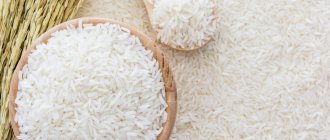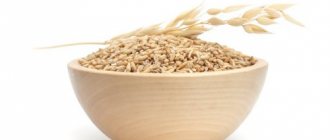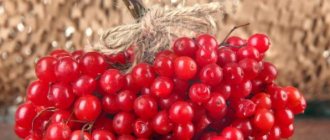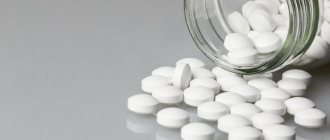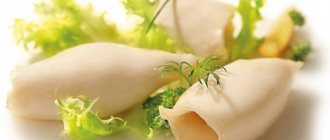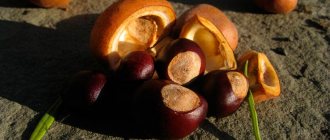In the treatment of diabetes mellitus, not only drugs that correct insulin production are used...
In the treatment of diabetes mellitus, not only drugs that correct insulin production are used. Some herbal remedies also have healing effects and are recognized by official medicine.
Beans are an effective therapeutic and preventive remedy for diabetes. They help stabilize metabolic processes and maintain normal blood sugar levels.
General information
The legume crop spread throughout the world from Latin America.
It belongs to the group of vegetables and is grown in countries with warm climates. In Russia, the harvest is obtained from farm plantations located in Krasnodar and the Dagestan region. Some beans are exported to the country by Türkiye and Kyrgyzstan. There are several dozen types of climbing and bush beans. Its fruits are hanging pods 5-28 cm long. They contain cylindrical seeds that can be separated by partitions. Depending on the variety, their color varies from white to dark purple.
The fruits are harvested in August-September. They are used for food, and the leaves of the white varieties are used for medicinal purposes.
Calorie content and composition
The energy value of mature bean grains is 298 kcal, and that of asparagus beans is 23 kcal. During heat treatment, it changes depending on the cooking method:
| Type of cooking of beans | Calorie content, 100 g (kcal) | |
| Seeds | Greens | |
| Boiled | 101 | 26 |
| Fried | 128 | 91 |
| Stewed | 108 | 85 |
| Canned | 27 | 15 |
| Frozen | — | 27 |
Beans are a natural supplier of antioxidants, pectins, ascorbic acid, B vitamins, potassium, magnesium, phosphorus, and iron. It contains a lot of dietary fiber, iodine, zinc and chromium.
Chemical composition
Glycokinin is present in bean leaves. This substance acts similarly to insulin, without which people with type 2 diabetes cannot live. Legume husks are rich in:
- amino acids;
- flavonoids;
- triterpene glycosides;
- natural sugars.
The product contains vitamins of different groups, estrogens, which are not found in other plants. Fats, fiber, and organic acids were found in the bean pericarp. Microelements are represented by iron, calcium, magnesium, carotene.
Beneficial properties of beans for type 1 and type 2 diabetes
Endocrinologists and nutritionists recommend that patients with this diagnosis consume pods and mature beans for health purposes. The plant product saturates well and is quickly absorbed. The elements it contains are involved in hematopoiesis, cleanse the body, strengthen the nervous and immune system, prevent swelling, improve vision and dental condition. A high percentage of zinc promotes the production of insulin, which reduces the threat of coma in type I diabetes. Iodine regulates the functioning of the endocrine system, which has difficulty coping with overloads due to high sugar levels.
Glycemic index
Beans are classified as foods with a low glycemic index: 40 units for white and red beans and 20 units for green beans. Eating beans does not cause sudden jumps in blood glucose and maintains its stable level.
Beans have a low glycemic index.
Ratio of proteins, fats and carbohydrates
Standardly, the BJU of beans is distributed as follows (per 100 g):
- proteins - 21 g;
- fats - 2 g;
- carbohydrates - 47 g.
Proteins nourish the body and are broken down into amino acids and participate in metabolism. Carbohydrates provide energy, and fiber slows down the rate of their absorption and prevents sudden changes in blood sugar. Low lipid levels eliminate the accumulation of subcutaneous fat.
Nutritional value
The culture is superior to some varieties of meat and fish in terms of easily digestible vegetable protein content. There is more copper and zinc in the product than in many other vegetables.
The high level of fiber ensures a long-lasting feeling of fullness and prevents overeating.
Features of the use of decoctions
The action of decoctions based on the shells of the legume plant does not react with medications, so they are optimally suited for complex treatment, enhancing the therapeutic effect of the drugs. The main advantage is the good tolerability of the folk remedy, as well as the absence of side effects, unlike most drugs. A decoction prepared on the basis of one component does not cause allergic reactions and is an excellent remedy for patients prone to allergies.
The herbal medicine does not accumulate in the body, which means there is no addiction syndrome, which makes it possible to feel the therapeutic effect for a long time.
After the therapeutic course, an interval of 12 days should be taken.
To prevent side effects, when preparing decoctions, you should adhere to the following recommendations:
- Use of dried raw materials. Fresh shoots of the plant contain many useful components, which can manifest themselves as fermentation in the intestines.
- Adding honey and sugar to the broth is contraindicated. Taking the product in parallel with sweet foods inhibits the beneficial properties of the plant.
- Adhere to storage rules. The decoction is poorly preserved, so it should be prepared in the required volume for one day of administration.
- Stick to the dosage. Increasing the dose of the drug may cause the development of negative symptoms.
- Stick to the course of treatment. When used once, the decoction does not reveal any sugar-lowering properties.
What beans are allowed to be consumed if you have diabetes?
Diabetics are allowed to include any variety of beans in their diet. For it to be beneficial, age, type of disease, and overall health must be taken into account.
Capsicum
Green pods without husking the beans are most useful when fresh. This is a seasonal food that loses a lot of valuable substances when dried and frozen. Tender stems improve blood composition, remove excess fluid from the human body, and regulate the functioning of the liver and pancreas. The culture is especially useful for insulin-dependent diabetes.
Green beans are as healthy as possible.
Red
This type of legume regulates glucose levels, therefore it is mandatory in the diet for type 2 pathology. Dishes from it can be included in the diet up to 5-6 times a week.
The product stimulates digestion and metabolism, has anti-inflammatory properties, soothes and restores strength.
White
Light beans can be consumed for any type of carbohydrate metabolism disorder. They stimulate the pancreas and normalize insulin levels in the blood. These beans accelerate the healing of cracks and wounds, stimulate tissue regeneration, maintain vascular tone, and regulate blood pressure (up or down). The plant culture can be used in the diet daily.
Black
The dark variety of beans regulates glucose levels and has many beneficial properties for diabetics. It prevents the development of benign and malignant neoplasms, removes toxins, and has an antibacterial effect. The product has a diuretic effect and reduces cholesterol levels.
Black beans regulate glucose levels.
Plant valves
After the beans are removed, the flaps remain in the pods.
This part of the plant is usually used to prepare a healing decoction. It contains numerous minerals, amino acids, and flavonoids. The most important of these in diabetes is glucokinin, which promotes the absorption of glucose. Kaempferol and quercetin strengthen the walls of blood vessels and prevent complications that accompany diabetes. The drink is made from fresh and dried leaves, so they can be prepared for the winter during the harvest period.
Healing raw materials should be stored in closed glass or plastic containers with ventilation holes.
Raw
Eating beans raw may cause bloating or flatulence. Similar troubles are observed in people with sensitive digestion and diseases of the gastrointestinal tract. If there are no side effects, the beans can be taken. To do this, you need to soak 5 grains overnight every day, and eat them on an empty stomach in the morning.
Canned
This product loses up to 30% of vitamins and minerals. However, it can be used for diabetes after careful study of the composition that was used for preservation. Pre-processed grains have a low calorie content and serve as an independent side dish or as an addition to other dishes.
Canned beans lose vitamins and minerals.
Soaked
Diabetics should soak any type of dry beans before cooking. In unprepared form, grains contain phytic acid, which impairs the process of absorption of nutrients from food. It is necessary for seeds to protect against bacteria and pests and is destroyed when soaked.
Valuable properties of legumes
Based on the chemical composition, beans have extremely valuable qualities for people with diabetes. The microelement iron, and the macroelements potassium and phosphorus increase the functionality of the pancreas. Essential amino acids take an active part in metabolic processes. Vitamins help strengthen the immune system. The abundance of fiber normalizes digestion and does not allow the resulting glucose to be rapidly absorbed.
In terms of the number of amino acids, the residues of which serve as an insulin base, red beans are the leader. This variety also contains the largest amount of copper, which promotes proper protein metabolism. The advantage of the black variety is a large amount of antioxidants, the use of which helps prevent the development of diabetic complications.
White beans contain a maximum of minerals: calcium - for bone health, magnesium and potassium - for stable cardiac activity and the elimination of dysania (sleep disorder), manganese - to maintain the process of hematopoiesis. Green beans (beans and leaves) have a detoxifying property, allowing the body to promptly release incoming toxins and accumulated slag deposits.
Dishes for diabetics
The medicinal qualities of beans (all varieties), against diabetes, are expressed by the following effect:
- Stabilization of glycemia.
- Normalization of blood pressure (blood pressure).
- Removal of toxic and cholesterol deposits.
- Strengthening the elasticity of vascular walls and heart muscle.
- Activation of the immune system.
- Elimination of edema.
- Metabolism stimulation.
- Maintaining a healthy skeletal system.
The regenerative property of legumes accelerates the restoration processes of the skin. Beans are especially useful for diabetes as a remedy for hypercholesterolemia. The ability to remove low-density lipotropes (“bad cholesterol”) allows you to delay the development of atherosclerosis, a common companion to diabetes.
Traditional medicine recipes
Regular consumption of decoctions and infusions from green beans normalizes blood glucose levels in type 1 and type 2 diabetes.
The drinks improve well-being and help reduce the daily dose of insulin for people who need injections. Effect of healing liquids:
- reduce appetite;
- protect liver cells;
- regulate fat metabolism;
- cleanse blood vessels;
- prevent the formation of cholesterol plaques.
While drinking drinks, regular monitoring of blood sugar levels is necessary. The course duration is 2 weeks, frequency is 3-4 times a year. Treatment is not carried out for acute pancreatitis, cholecystitis, or individual intolerance.
Infusion
Recipe 1. Pour boiling water (1 l) over thoroughly washed doors (4 tbsp), wrap and leave for a day. Strain, take 100 ml three times a day before meals.
Bean infusion is taken before meals.
Recipe 2 (in a thermos). Pour 500 ml of just boiled water into the prepared raw materials (3 tablespoons). After 6 hours, strain. Drink half a glass 3 times a day, regardless of meals.
Decoction
Traditional method of preparation:
- The leaves (60 g whole or 2 tablespoons crushed) are poured with 400 ml of hot boiled water.
- Simmer in a water bath for 15 minutes.
- Strain and add boiled water to the original volume.
The drink is consumed three times a day. The volume of its single serving is 100 ml.
Mixed decoctions are prepared using a similar method and alternated with the classic composition. They add bay leaves (1-2 pcs.), flax seed (10 g), fresh Jerusalem artichoke. Healing liquids cannot be stored for long periods of time. They are prepared and consumed throughout the day.
Reviews
Elena, 41 years old
I have diabetes, but without insulin dependence. My doctor recommended that I take decoctions of bean leaves. After it I feel much better. Sugar returns to normal even without taking pills.
Andrey, 36 years old
I have high sugar, so the doctor advised me to drink infusions of bean pods. I tried it and noticed that this product really helps. I feel much better since then.
Recipes for diabetics
Legumes make the diet of diabetics balanced and more interesting. The menu should be compiled taking into account the state of health and the presence of other chronic diseases.
Soup
Boil the grains soaked overnight (300 g) for 1.5 hours. Separately prepare chicken broth, add beans, chopped carrots, onions, celery root and cauliflower. Leave on low heat until cooked, garnish with chopped herbs.
Bean soup is cooked in chicken broth.
Hot snack
Throw green peas and green beans into boiling water and boil for 5 minutes. At the same time, fry onions, carrots, chopped mushrooms (oyster mushrooms and champignons). Add boiled legumes, tomato juice, salt and spices to the mixture. Simmer over low heat for 10 minutes. Serve hot or chilled with side dishes.
Meatballs with garnish
Grind the turkey fillet, form meatballs and steam them. Boil green beans in salted water and add to hot meat balls. Sprinkle the finished dish with grated mild cheese.
Salad
Cut 400 g of carrots and boiled or canned beans into cubes, mix the ingredients in a salad bowl. Prepare dressing from 2 tbsp. vegetable oil, 1 tbsp. apple cider vinegar and a pinch of salt, pour it over the vegetables. Add finely chopped greens.
Bean salad is prepared with carrots.
Veal with beans
Boil ½ cup white beans until soft. Add 125 g of lean young meat, and 10 minutes before it is ready, add diced carrots. Grind the ingredients to a puree using a blender. Serve the dish hot, beautifully decorated.
Fish in the oven
Clean red or white fish. Season with spices to taste and lemon juice. Leave to marinate for 2 hours in the refrigerator. Place washed green beans (400 g), carrot and onion slices on the bottom of the baking dish. Place the fish on the “cushion”. Make cuts in it and insert tomato and lemon rings into them. Bake in an oven preheated to +200⁰C for 20-30 minutes.
Stewed rabbit
Boil the butchered rabbit until half cooked, do not discard the broth. Fry the onion rings in a frying pan until caramelized, add chopped garlic and lastly chopped green pods. Simmer for 5-7 minutes. Add rabbit, a little broth and simmer for 30 minutes. Serve in portions.
Stewed rabbit is served in portions.
Lobio
Soak red beans for 4 hours in cold water. Boil them until soft, saving some of the liquid. Fry chopped onion and garlic. Towards the end add suneli hops and cool. Grind walnuts, onions and garlic in a blender. Separately, process the cilantro in a mortar, adding salt and garlic to release the juice. Combine the grains and the resulting nut mass, season to taste.
Leave for an hour and serve. Leftover snacks should be stored in the refrigerator and consumed within 3 days.
Tea from the leaves
A drink with healing properties can be brewed from dried bean pods. You need to pour 2 tbsp boiling water. raw materials and leave for 1 hour, strain. Drink 125 ml three times a day on an empty stomach.
Harm and contraindications
It is not recommended to consume legumes if you have an individual intolerance.
It is important to exclude it from the diet during pregnancy, breastfeeding, sensitive digestion, high acidity, nephritis, cholecystitis, gastritis. The product should be used with caution by people over 60 years of age. Risks are associated with excessive gas formation, flatulence, colic, and digestive disorders. In gout, nitrogenous compounds can stimulate salt deposition. Some people are allergic to legumes. It manifests itself in the form of rash, itching, skin rashes, and difficulty breathing. If there is a negative reaction, the product is excluded and a replacement of equal nutritional value is selected.
Beans are excluded if you have sensitive digestion.
Rules for selection and storage
When purchasing green beans, it is important to pay attention to their appearance.
It should be smooth, elastic, without traces of mold, dryness or deformation. It is advisable to break the pod and make sure it is juicy and crispy. It is necessary to refuse the purchase if the greens are wet, limp, translucent, and the grains in them are clearly visible. When choosing a frozen product, you should pay attention to the composition, reputation of the manufacturer, freezing time and expiration date. There should be no ice in the bag. It is recommended to consume young pods within 5-10 days from the date of purchase, preventing them from drying out and spoiling.
Store them in the refrigerator, and place leftovers in the freezer and consume within 6 months.
When choosing dry grains, you should be guided by general rules, the essence of which is:
- high-quality beans should be as free-flowing as possible, without traces of impurities;
- The presence of traces of mold and damage on the surface of the beans is not allowed;
- It is important to check the integrity of the packaging in which the product is packaged.
When dry, the grains retain their nutritional value and beneficial properties for 2-3 years. They must be poured into a canvas bag or jar and placed in a cool, ventilated place.
